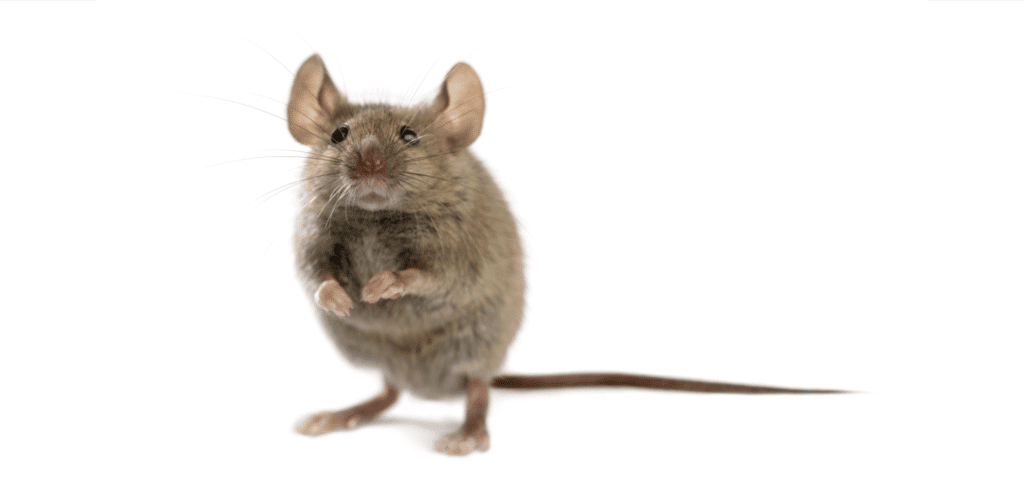MOUSE
EXTERMINATOR
FLEAS
AGAINST MICE
Rarely do we imagine that a mouse, no matter how pretty, can cause so much damage in an environment. Indeed, far from being a great ally, as in Cinderella, the common mouse, in our reality, is more than harmful. It infests not only our buildings but also our crops in addition to being a vector of diseases, some fatal to humans. So why risk such serious damage when a professional exterminator exterminator, like A Extermination, can clean up your home in no time?

DO NOT WAIT
MORE!
CONTACT US
NOW
FOR YOUR
EXTERMINATOR.
PLAN A
VISIT
TODAY
WE RESPOND TO
FREQUENTLY ASKED QUESTIONS
ABOUT MICE
ALL ABOUT MOUSE
Why hire a mouse exterminator expert?
In the event of a mouse infestation, you must act very quickly. In fact, mice reproduce at such a rate that it is very likely that you will lose control of the situation faster than you think. The exterminator is specialized in the field. It will therefore be able to carry out an elimination very efficiently. And that’s not to mention that the slightest mistake on your part will be highly detrimental to you.
Also, mice are rodents. By attacking electrical wires, these parasites can cause fires. Rodents like to live at night, making it harder to eliminate them especially since they have an excellent sense of smell, taste and touch.
How do you know if there are mice in your home?
To detect the presence of mice in your home, here are some signs to watch for:
1. Noise: Mice are most active at night. You may hear scratching, squeaking or footsteps in the walls, ceilings or floors.
2. Droppings: Mice leave droppings wherever they go. These look like black rice grains. You might find them in your closets, drawers, or along the walls.
3. Gnawing Traces: Mice gnaw on everything from electrical wires, furniture, food bags, boxes… If you find gnawed items or punctured food wrappers, it may indicate the presence of mice.
4. Nests: Mice build nests with soft materials such as paper, cloth or insulation. If you find such a nest, chances are you have mice.
5. Odor: Mice have a distinctive odour, a mixture of ammonia and musk, which can become quite strong when infested.
If you see one or more of these signs, you probably have mice in your home. It would then be advisable to take steps to eliminate them or to call in a professional to do so.
What attracts mice?
Mice are attracted to several factors that allow them to survive and thrive. Here’s what can attract them to your home:
1. Food: Mice are mainly attracted to food. They are omnivorous and can eat almost anything, but they prefer grains, fruits, nuts and sweet foods. Crumbs left on the floor, unsealed food or unsealed garbage cans can all attract mice.
2. Water: Mice need water to survive. They are often attracted to accessible sources of water, such as a water leak, a pet bowl or even moisture in your basement.
3. Shelter: Mice look for safe places to build their nests and breed. Your home offers many potential shelters, such as walls, attics, basements, garages, and even wood or debris piles.
4. Warmth: In winter, mice often seek a warm place to escape the cold. Your home can provide the warm shelter they need.
5. Entry points: Mice are small animals that can squeeze through very small holes and cracks. If your house has openings, they can enter and nest there.
To avoid attracting mice, it’s essential to keep your home clean, store food properly, fix water leaks and seal potential entry points.
What noise do mice make?
Mice make a variety of sounds that can help you identify their presence. Here are the main ones:
1. Squeaks: Mice often make high-pitched squeaks, especially when interacting with other mice.
2. Scratching: Mice have small claws and frequently gnaw. If they are in your walls, ceilings or under your floors, you may hear scratching noises.
3. Rustling: Mice are small animals, but they can make a lot of noise as they move around. If you hear noises in areas where there should be no activity, it may be mice.
4. Gnawing sounds: Mice gnaw constantly to keep their teeth at a manageable length. If you hear gnawing noises, especially at night, it may indicate the presence of mice.
These noises are often most audible at night when the house is quiet and the mice are most active. If you hear any of these noises and suspect a mouse infestation, it is recommended that you contact a professional for an evaluation.
Where does a mouse live?
The mouse is a very adaptable animal that can live in a variety of habitats. Here’s where they can fit:
1. Inside homes: Mice can make their home in houses, apartments, attics, basements, garages and warehouses. They look for quiet, warm and sheltered places where food is accessible. You can find them behind walls, under floors, in false ceilings, behind appliances, in closets, etc.
2. Outdoors: Mice can also live outdoors, in burrows in the ground, under woodpiles, in abandoned bird nests, or even in outdoor buildings such as barns or sheds.
3. Rural and wilderness: Mice can also live in fields, forests, meadows, and near waterways. They often live in burrows or nests made of plants.
In short, mice can live almost anywhere they find food, water and shelter. Therefore, it is important to limit their access to these resources to prevent their installation.
Why are there mice in my house?
There can be many reasons why mice move into your home. In general, they are attracted to three things: food, water and shelter. Here are some factors that may contribute to their presence in your home:
1. Access to food: Mice are constantly searching for food. If you leave food out in the open, crumbs on the floor, or if your garbage cans are not properly sealed, they can be attracted.
2. Water sources: Like food, mice need water to survive. They may be attracted to a source of water, such as a leak or a pet water bowl.
3. Shelter: Mice look for warm, safe and inconspicuous places to build their nests. If your home offers such places (such as an attic, basement, cavity walls, or woodpiles), they may decide to move in.
4. Accessible entrances: Mice can squeeze through holes and cracks as small as a pencil. If your home has unsealed entry points, they can easily get in.
To avoid a mouse infestation, it’s important to store food properly, fix water leaks, seal potential entry points and keep your home clean and tidy. If you suspect an infestation, it is recommended that you call a professional for mouse removal and prevention.

| Name | Mouse, House Mouse |
|---|---|
| Class | Mammalia |
| French name | Colour |
| Latin name | Mus musculus |
| Length | 6 to 10 cm approximately (+ 10 cm for the tail) |
| Color | grey, black or white |
| Life | 2 to 3 years maximum |
PREVENTION
During the colder months, mice seek food, warmth and shelter indoors, often entering homes through small cracks and crevices. However, the real concern is that these rodents pose a health threat and can spread diseases that are transmissible to humans. In addition, they can cause a lot of material damage once inside (electrical wires, insulating materials, etc.).
Here are some preventive tips to follow to prevent a mouse infestation:
- Cut the grass as short as possible and eliminate mouse nesting sites by removing any clutter around the building.
- Ensure that waste is in containers with tight fitting lids.
- Eliminate water sources such as leaky faucets, seeping pipes and open drains.
- Keep the kitchen clean and ensure that pet food is in tightly closed metal or glass containers.
- Block all possible accesses, especially those near the floor, as mice can squeeze through openings as small as 0.6 cm (¼ in.).
RECOMMENDATIONS
Why call in an extermination expert?
A professional mouse exterminator will use poison or traps to quickly get rid of mice in your home. He will inspect your home and identify strategic areas to apply poison and set traps.
If you have a mouse infestation, call an exterminator from A-Extermination to learn about the different solutions available to you to control, reduce and eliminate the outdoor rodent population that could infest your building. Our experts will provide you with a free estimate.
They can inspect your property for potential entry points and signs of mouse activity, as well as offer solutions to control the outside population if necessary.

